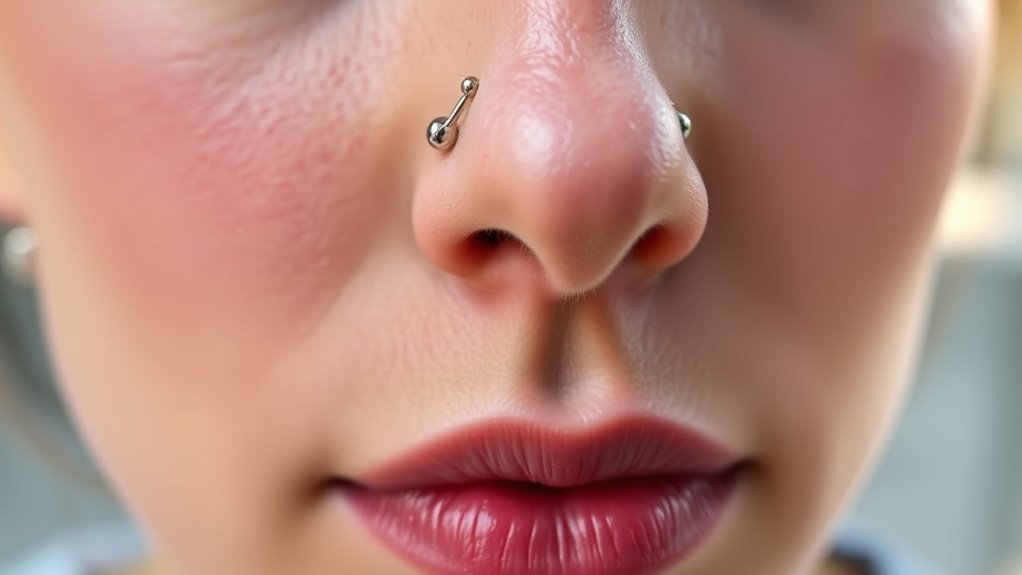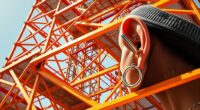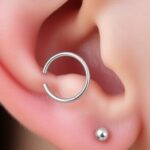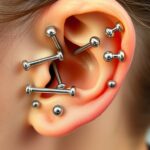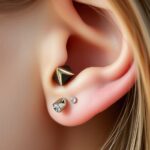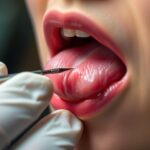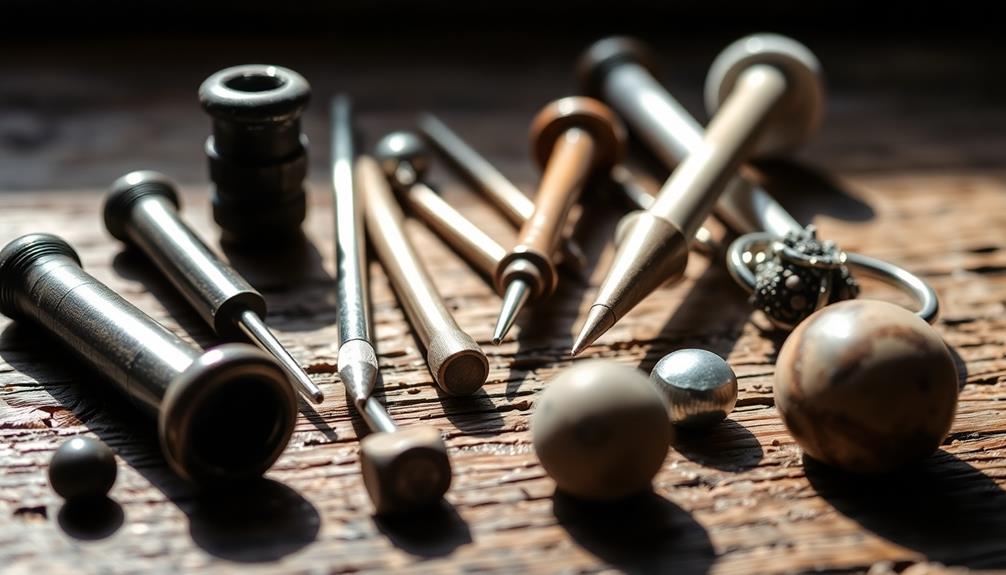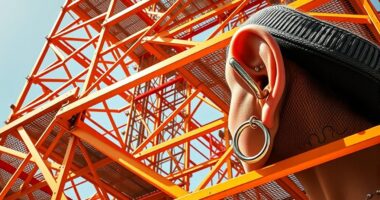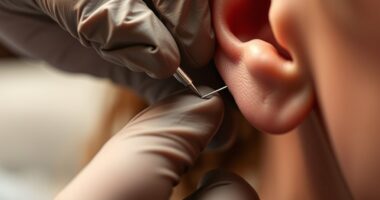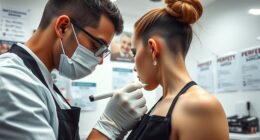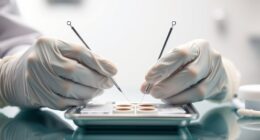Bridge and nasallang piercings come with challenges like prolonged healing, risk of infection, and irritation from jewelry or pressure. To care for them, practice strict hygiene, avoid touching with unwashed hands, and steer clear of swimming or tight clothing. Selecting the right jewelry materials and waiting for professional approval before switching pieces are essential. Staying vigilant during healing helps prevent complications. Keep exploring for more tips to ensure a smooth process and beautiful results.
Key Takeaways
- The placement of bridge and nasallang piercings makes them highly visible and prone to accidental bumps or pressure, posing healing challenges.
- Proper aftercare, including saline soaks and hygiene, is essential to prevent infections and promote healing.
- Healing can take several weeks to months; patience and avoiding trauma are crucial for successful recovery.
- Jewelry choice impacts comfort and healing; use biocompatible materials and avoid sharp or rough-edged pieces.
- During healing, avoid touching, sleeping on, or exposing the piercings to water sources to minimize complications.
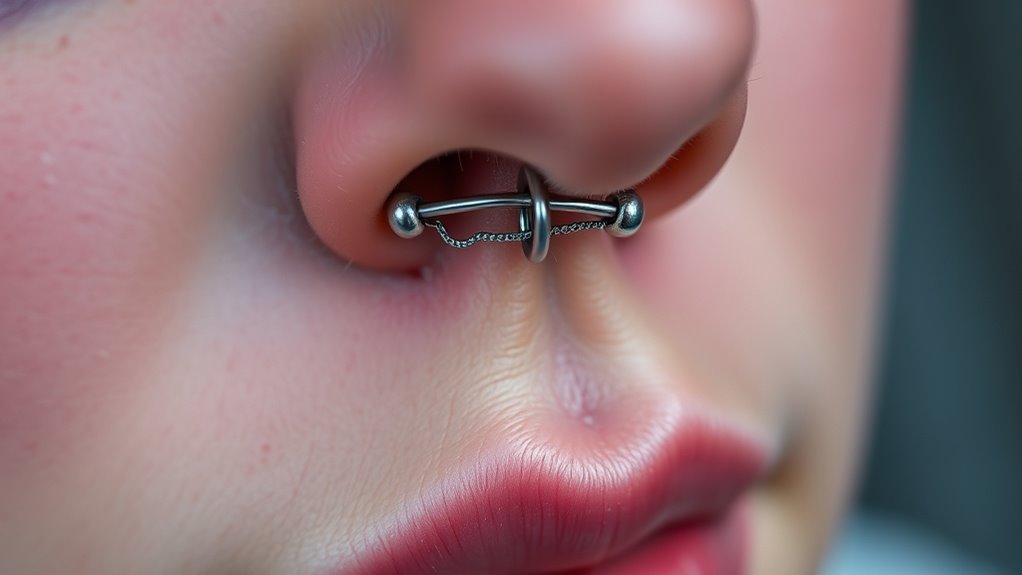
Ever wondered what makes bridge and nasallang piercings stand out? It’s the unique placement and bold aesthetic they offer, but with that distinct look comes a demanding healing process and careful jewelry choices. When you get a bridge or nasallang piercing, you’re committing to a healing journey that requires patience and proper care. The healing process can take anywhere from several weeks to a few months, depending on your body’s response and how well you follow aftercare routines. During this time, your body works to heal the puncture sites, and you’ll need to be diligent about keeping the area clean and free from infection. Swelling, tenderness, and minor bleeding are common initially, but if you notice prolonged pain, redness, or pus, it’s essential to seek professional advice promptly. Proper hygiene is *fundamental*—saline soaks and gentle cleaning help facilitate healing and reduce complications. Additionally, understanding piercing anatomy can help you better care for your new jewelry and avoid unnecessary irritation.
Choosing the right jewelry options is equally *significant*. Since these piercings involve delicate tissue and are situated in highly visible areas, you’ll want jewelry that minimizes irritation and promotes healing. Typically, jewelry options like surgical steel, titanium, or biocompatible gold are recommended because they’re less likely to cause allergic reactions or infections. During the healing period, it’s best to avoid jewelry with sharp edges or rough finishes that could irritate the piercing or delay healing. You might initially opt for straight or circular barbells, but as healing progresses, you can explore more decorative or personalized pieces once your piercer confirms it’s safe to change jewelry. Remember, always consult with a professional piercer about jewelry options to *guarantee* you’re selecting pieces that suit your anatomy and promote *ideal* healing.
It’s also *imperative* to be cautious about how you handle your piercings. Touching with unwashed hands, sleeping on the side of the piercing, or exposing the area to excessive moisture can all hinder the healing process. During the healing phase, avoid swimming in pools, hot tubs, or natural bodies of water that could introduce bacteria. Wearing loose, breathable clothing around the face can help reduce irritation and pressure on the piercings. As tempting as it may be to switch jewelry early or change styles, patience is key—wait until your piercer confirms it’s safe to switch. Following these guidelines and understanding the importance of the healing process and jewelry options will ensure your bridge or nasallang piercing heals well and keeps its striking appearance.
Frequently Asked Questions
How Long Does Each Healing Process Typically Last?
The healing duration for bridge and nasallang piercings usually spans from 6 to 12 weeks, but your recovery timeline can vary based on individual healing rates and aftercare. During this period, you should keep the piercings clean and avoid unnecessary trauma. Patience is key; proper care guarantees a smooth recovery. If you notice prolonged swelling or pain, consult your piercer or a healthcare professional to prevent complications.
Are There Specific Jewelry Materials Recommended for These Piercings?
For these piercings, you should choose jewelry made from biocompatible materials like surgical steel, titanium, or niobium, which help avoid medication interactions and reduce allergy risks. Being aware of jewelry allergy concerns is essential, especially if you have sensitive skin. Always consult your piercer about material options and verify the jewelry is hypoallergenic to minimize complications and promote swift healing.
Can These Piercings Impact Breathing or Nasal Function?
Breathing barriers can temporarily disrupt nasal airflow, causing breathing difficulties. When you get a bridge or nasallang piercing, swelling or jewelry placement might squeeze nasal passages, impacting breathing or nasal function. While many experience no issues, it’s essential to monitor comfort and consult your piercer if you notice persistent problems. Proper aftercare minimizes swelling and maintains nasal health, helping you breathe freely and keep your nasal functions functioning flawlessly.
What Are Signs of Infection or Complications to Watch For?
You should watch for signs of infection like increased redness, swelling, pain, or pus around your piercing. Fever or a foul odor also indicate complications. If your piercing feels warm or tender, or if there’s bleeding that won’t stop, these are warning signs. Ignoring piercing complications can lead to more serious issues. If you notice any of these symptoms, see a professional piercer or healthcare provider promptly to avoid further problems.
Are There Age Restrictions or Health Conditions That Prevent These Piercings?
You might face strict age restrictions for bridge and nasallang piercings because your body needs to be fully developed—it’s not worth risking a tiny mistake! Certain health conditions, like immune issues or skin problems, can make these piercings unsafe. Always consult with a professional piercer who can evaluate your age and health contraindications, ensuring you get the safest experience possible and avoid complications.
Conclusion
Remember, caring for bridge and nasallang piercings is like tending a delicate garden—you need patience, attention, and gentle hands. I once knew someone who ignored the initial swelling, only to face long-term issues that could’ve been avoided. Studies show proper aftercare reduces complications by over 80%. So, treat your piercing as a prized bloom; with consistent care, it’ll flourish, giving you a striking look that’s both bold and beautiful.
Piecing together a life one day at a time, that’s me. I’m Rusty, and I love being editor-in-chief of creative piercing. It’s my passion to help others see their vision and bring it to life. When I’m not working or taking care of my family, you can find me reading a good book or eating pie (of course!).

